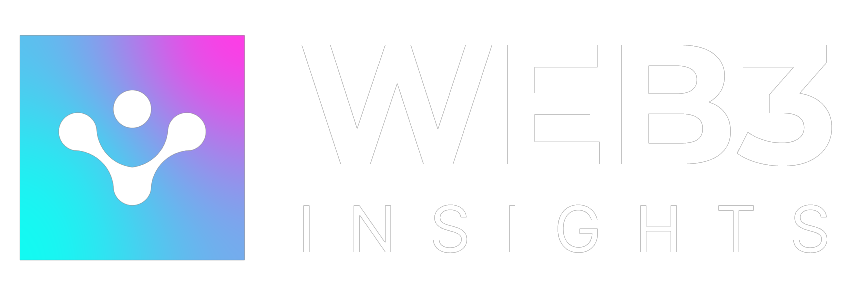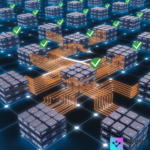
Imagine a world where you can send money directly to someone without a bank. It happens in seconds, not days, and you don’t have to worry about those annoying bank fees. Or think about storing your money in an online wallet that you didn’t link to a bank, making you your bank.
You have total control over your money and there is no need to ask anyone’s permission to access or move it. You’ll never have to worry about a third party taking it away or a government’s economic policies messing with it.
These are just a few ways blockchain technology is shaking things up; there’s so much more to explore and we will get on it in this article
What Is Blockchain Technology?

Blockchain is like a shared database that runs on a network of computers. It’s mainly for powering cryptocurrencies like Bitcoin, but it can be used in many other ways too. Blockchain is especially useful for keeping data secure and unchangeable.
Think of it as a digital ledger that records transactions in a way that makes them almost impossible to alter or hack. This ledger is shared across many computers, so everyone has the same information.
Everyone can see the data, but no one can change it.
How Does Blockchain Work?

To understand how a blockchain works, you will have to learn about two things: the components and transaction process of a blockchain.
Components of a Blockchain

1. Blocks:
Blocks are the building blocks of a blockchain, like pages in a digital record book. Each block has important details like a timestamp, a unique code called a hash, and a link to the previous block, which helps connect the entire chain.
Inside a block, you’ll find a list of transactions. The block’s hash is like a fingerprint, making sure the block’s information stays secure. If anyone tries to change something in the block, the hash would change, making it obvious that tampering occurred.
These blocks are connected in a chain, making the whole system secure and nearly impossible to alter.
2. Nodes:
Nodes are the computers or devices that keep a blockchain running. They are responsible for storing a copy of the entire blockchain and ensuring all transactions are valid.
Full nodes hold the complete blockchain and check every transaction and block to keep the network secure. Light nodes, often used on smaller devices, only store essential data and get the rest from full nodes.
In systems like Bitcoin, mining nodes compete to solve puzzles and add new blocks to the blockchain, earning rewards. Some networks also have special nodes called masternodes that offer extra features like faster transactions or better privacy.
All nodes work together in a peer-to-peer network, sharing information to keep the blockchain consistent and secure.
3. Consensus Mechanism:
Consensus mechanisms are essential for maintaining agreement on the validity of transactions within a blockchain network.
Proof of Work (PoW) is the most well-known mechanism, where miners solve complex puzzles to add new blocks to the blockchain. This method is highly secure but requires significant energy and can slow down transaction processing.
Proof of Stake (PoS) selects validators based on the amount of cryptocurrency they hold and are willing to “stake.” PoS is more energy-efficient than PoW and speeds up transactions, but it can lead to centralization if a few participants control most of the stake.
Transaction Process

Using Bitcoin as an example, the following explains how transactions occur in a blockchain:
1. Initiating a Transaction: When you make a transaction using your Bitcoin wallet, it gets sent to a memory pool, where it waits to be picked up by a miner.
2. Mining Process: Miners gather transactions from the memory pool and include them in a new block. They then work to solve a complex mathematical problem to add the block to the blockchain. This process involves trying different “nonces” (numbers) until they find one that meets the required difficulty target.
3. Proof-of-Work: Miners use a lot of computational power and energy to solve this problem. Once they find the correct nonce, they add the block to the blockchain and receive a reward.
4. Transaction Confirmation: After a block is added, your transaction is not yet fully confirmed. It takes about an hour for the transaction to be confirmed, as it must be included in six successive blocks, with each block taking roughly 10 minutes to validate.
Other Blockchains like Ethereum use a different method. Instead of mining, Ethereum randomly selects validators from users who have staked ether (Ethereum’s currency). This process is generally faster and uses less energy than Bitcoin mining.
Types of Blockchain

Here are the different types of blockchains:
1. Public Blockchains
Bitcoin and other cryptocurrencies emerged from public blockchains, which helped make distributed ledger technology (DLT) more popular. Unlike traditional systems where you store in one place, DLT spreads information across a peer-to-peer network. This helps solve problems like security issues and centralization.
To ensure that the information is accurate, public blockchains use consensus methods like Proof of Stake (PoS) and Proof of Work (PoW). These blockchains are open and decentralized, meaning anyone can participate in verifying transactions. Those who do, known as miners, are rewarded for their work. Two well-known examples of public blockchains are Bitcoin and Ethereum (ETH), which use these consensus mechanisms.
2. Private Blockchains
Private blockchains are restricted networks, meaning they aren’t open to everyone. To join, people need permission from a system administrator, making these blockchains controlled by a single entity. For example, Hyperledger is a private blockchain.
These blockchains are great for businesses and organizations that want more control. Companies can decide who can access the network, set security options, and manage the network’s rules. Only one authority oversees the entire blockchain.
3. Hybrid Blockchains or Consortium Blockchains
Hybrid blockchains combine public and private elements. Some parts of the blockchain are open and transparent, while others are private and accessible only to specific, authorized users. This makes them ideal for situations where you need both transparency and privacy, like in supply chain management, where certain information is shared, but sensitive data stays protected.
Consortium blockchains are similar but are managed by multiple organizations working together in a single network. While they can be more complex to set up, they offer stronger security and are perfect for collaborations between different organizations.
Features of Blockchain Technology

Blockchain technology is characterized by several key features that enhance its functionality, security, and usability across various applications. Here are the main features of blockchain technology:
1. Decentralization: Unlike traditional databases controlled by a central authority, blockchain operates on a decentralized network of nodes. This means that no single entity has control over the entire network, which enhances security and trust among participants.
2. Immutability: Once you record a data on the blockchain, it is extremely difficult to alter. Each block contains a cryptographic hash of the previous block, creating a chain that is resistant to tampering. This feature ensures that once a transaction is confirmed, it cannot be changed or deleted, providing a permanent record.
3. Interoperability: Interoperability in blockchain refers to the ability of different blockchain systems to communicate and exchange data seamlessly. This allows diverse applications to work together across various networks on a single blockchain, enhancing collaboration and creating a more connected and versatile ecosystem.
4. Transparency: All participants in a blockchain network have access to the same information, which fosters trust and accountability. This transparency allows users to independently verify transactions, reducing the risk of fraud and errors.
5. Security: Blockchain employs advanced cryptographic techniques to secure transactions and control access to data. The decentralized nature of the network means there is no single point of failure, making it more resilient against attacks.
Applications of Blockchain Technology

Blockchain technology has a wide range of applications across various industries, leveraging its unique features such as decentralization, transparency, and security. Here are some key applications of blockchain technology:
1. Cryptocurrency: The most well-known application of blockchain, enabling secure and decentralized digital currencies like Bitcoin and Ethereum.
2. Smart Contracts: Self-executing contracts with the terms directly written into code. They automate processes and reduce the need for intermediaries, enhancing efficiency and compliance in sectors like finance and real estate.
3. Supply Chain Management: Blockchain provides end-to-end visibility and traceability of products, helping to authenticate goods, prevent counterfeiting, and streamline logistics processes. This is particularly valuable in industries such as food and pharmaceuticals.
4. Voting Systems: Blockchain can create secure and transparent voting platforms, addressing issues of voter fraud and ensuring the integrity of the electoral process. This enables remote voting while maintaining anonymity.
5. Real Estate: Blockchain streamlines property transactions by providing a secure, transparent platform for buying, selling, and leasing properties, reducing fraud and improving efficiency.
These applications illustrate the transformative potential of blockchain technology across diverse sectors, promoting efficiency, security, and transparency in various processes.
Conclusion
We’ve explored blockchain technology from the basics to its exciting uses. Now you have a clear understanding of how it works, the key components, and different types of blockchains. Whether you’re new to this topic or looking to expand your knowledge, blockchain is a powerful technology with endless possibilities.
Want to learn more about Web3 and crypto? Keep reading my blog for the latest updates and insights. Dive into more articles to stay ahead in the world of technology. Your journey into the future starts here!







